Cleaning thoroughly between teeth everyday should be an important part of your oral hygiene routine to ensure oral health and fresh breath. Learn more here about flossing/interdental/cleaning between teeth! A large European review of the scientific literature in relation to the effectiveness of different forms of cleaning between the teeth has been undertaken with UK and European guidance supporting the use of interdental brushes where there is space but use floss where there is not. There are lots of options available to supplement the use of a manual or electric toothbrush.
Why? The gum area between teeth is very susceptible to inflammation. Bacteria can mature undisturbed underneath where two teeth are in contact and irritate the gums and cause inflammation. Inflammation causes gums to bleed spontaneously or when brushed and is an early sign of gum disease. Healthy gums don’t bleed!* Tooth surfaces between teeth are at increased risk of tooth decay where sugary food sticks and bacteria break down the sugars into acids that cause decay.
When to start? Theoretically start cleaning between teeth as soon as teeth are in contact with each other. These ‘in between’ surfaces are at risk of tooth decay and gum inflammation. GS recommends developing good oral hygiene habits from when the first tooth appears in the mouth. Parents and carers are encouraged to floss children’s teeth regularly to develop a lifelong habit of effective oral hygiene for oral health.
Clean between first – brush after. Unless you have been advised otherwise by a dental professional, floss/clean between teeth first, then brush your teeth with a fluoride toothpaste. Spitting out after brushing, but not rinsing will give maximum opportunity for the fluoride (and other ingredients e.g. for sensitivity), to work.
If you find interdental cleaning before brushing all too much effort to do at one time, clean between at a different time of the day when you have more time. It’s more important that it is done every day at some time. Always brush last thing before bedtime. The interdental gum is often the first place to show signs of inflammation and bleeding. If your gums bleed when you first start to clean between, it’s usually because of plaque bacteria lying undisturbed, irritating the gum tissue and causing inflammation. Keep going! Persevere and clean between daily. Within a couple of weeks you should notice a reduction in bleeding and your mouth should feel cleaner and fresher. If bleeding persists see your dental team for advice. For more information on gum inflammation and periodontal (gum) disease visit the British Society of Periodontology.
‘Between teeth’, to a certain extent is misleading as the aim is to actually disrupt and remove the plaque biofilm (the sticky substance that builds up on teeth and harbours disease causing bacteria) from the tooth surfaces that a toothbrush can’t reach. This is generally the area just under where teeth are in contact with each other (beside each other), and in health the gum tissue fills this space between teeth. See image below.
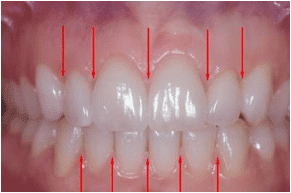
Your toothbrush can reach the outside, inside and biting surface of each tooth and clean along the gum line, but not the surfaces in between. This interdental (interproximal) area varies from one person to another and its size and shape can change through life. If you think about how a small child’s teeth appear versus someone who has crooked teeth or someone who has become ‘long’ in the tooth, you can get an idea of how varied the interdental area is in both shape and size.

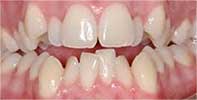
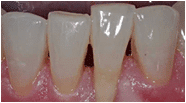
Consequently there are a variety of ways to reach these areas to remove the plaque biofilm. The aim is to clean effectively and regularly enough to keep YOUR mouth healthy and breath fresh, without damaging teeth or gums. There will always be someone who doesn’t seem to have to put as much effort into their oral care as you might to obtain and maintain health. This is because your oral health is as unique to you as your general health – a healthy mouth contributes to your overall health and well being – worth the effort? We think so!
For people who have healthy gums where the gum fills the space between teeth, ‘tight’ contact points between teeth or teeth that overlap, flossing is likely to be the option of choice. If you have space underneath the contact point, some form of interdental brush is going to be most effective. Water-flossing is also an option. Using a single tuft brush can help clean the ‘side’ surfaces of a single tooth, while special flosses, floss threaders etc, aid difficult to clean areas e.g. under bridges, around implants or orthodontic braces. See our range of interdental cleaning aids here. Don’t like the ‘brush feeling’? Try the rubber pimpled Easypick or Wisdom interdental brushes.
What is right for you will depend on your oral health risks, your ability to use the interdental cleaning aid and your personal preference and motivation. Not sure? Why not take Time Out For Teeth, our virtual oral health coaching service with an option for Clean between coaching. Learn more and book today.

Ask your dental team or GS oral health coach for advice on what is best for you.
Size is important when choosing interdental brushes – the bristles must contact the tooth surfaces to clean thoroughly. Poking food out from between teeth isn’t the same! Check out our videos on using interdental brushes and other forms of flossing/interdental/cleaning between teeth. Wear orthodontic braces? Find our how to clean between with braces here.
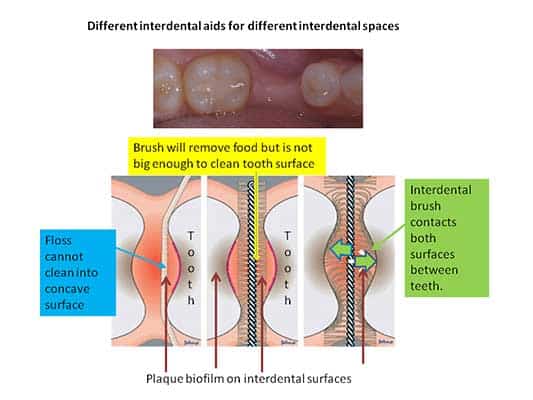
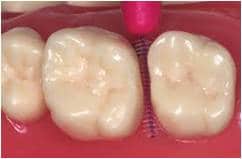
Growing Smiles online shop stocks a variety of interdental cleaning aids suitable for everyone so you can become an expert at flossing/interdental/cleaning between teeth!
*If you smoke or use tobacco products the circulation to the gums is restricted so you may not get the early warning of bleeding when brushing. Always let your dental team know if you use tobacco so they can take this into account when assessing your gum health.
